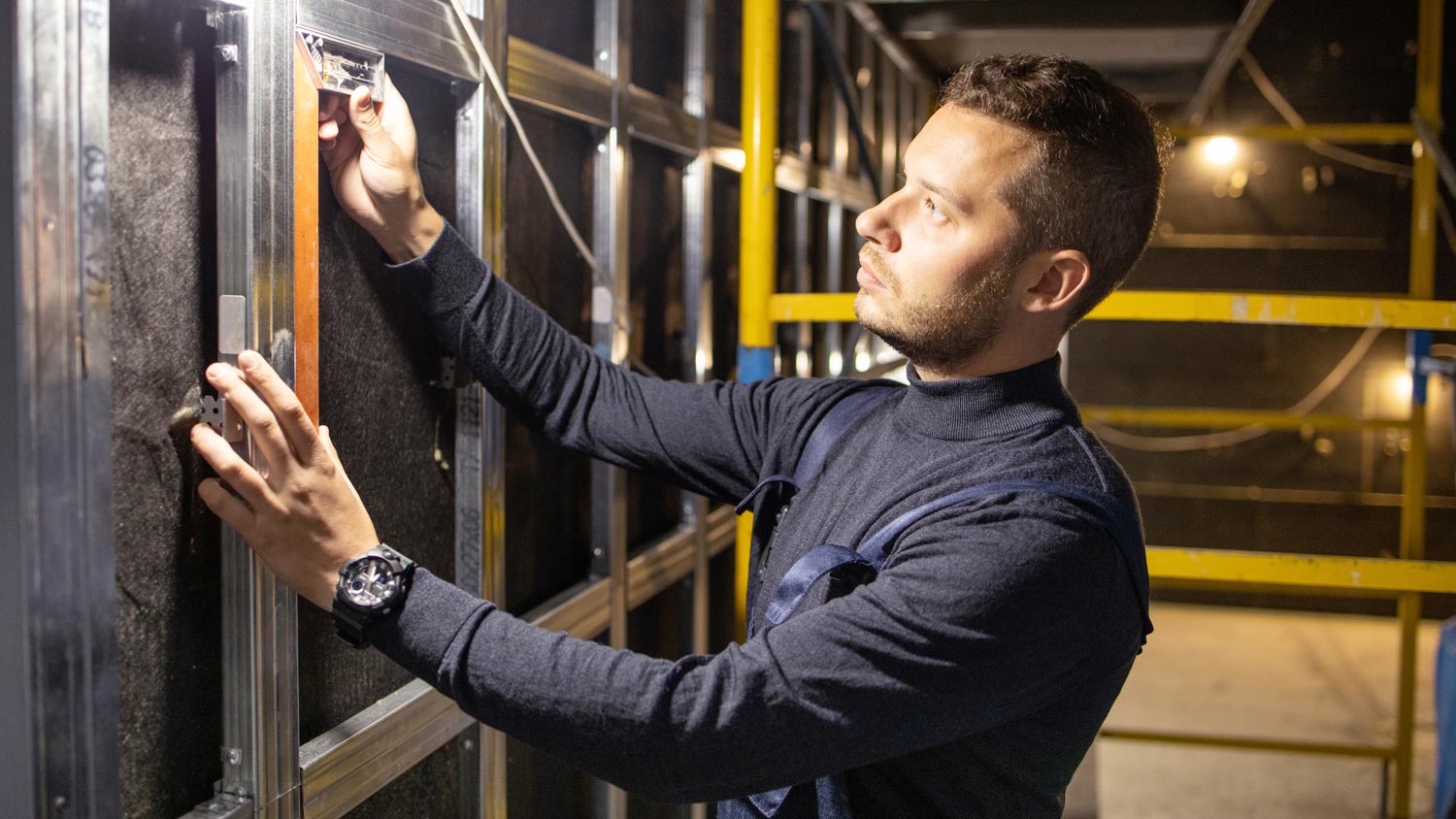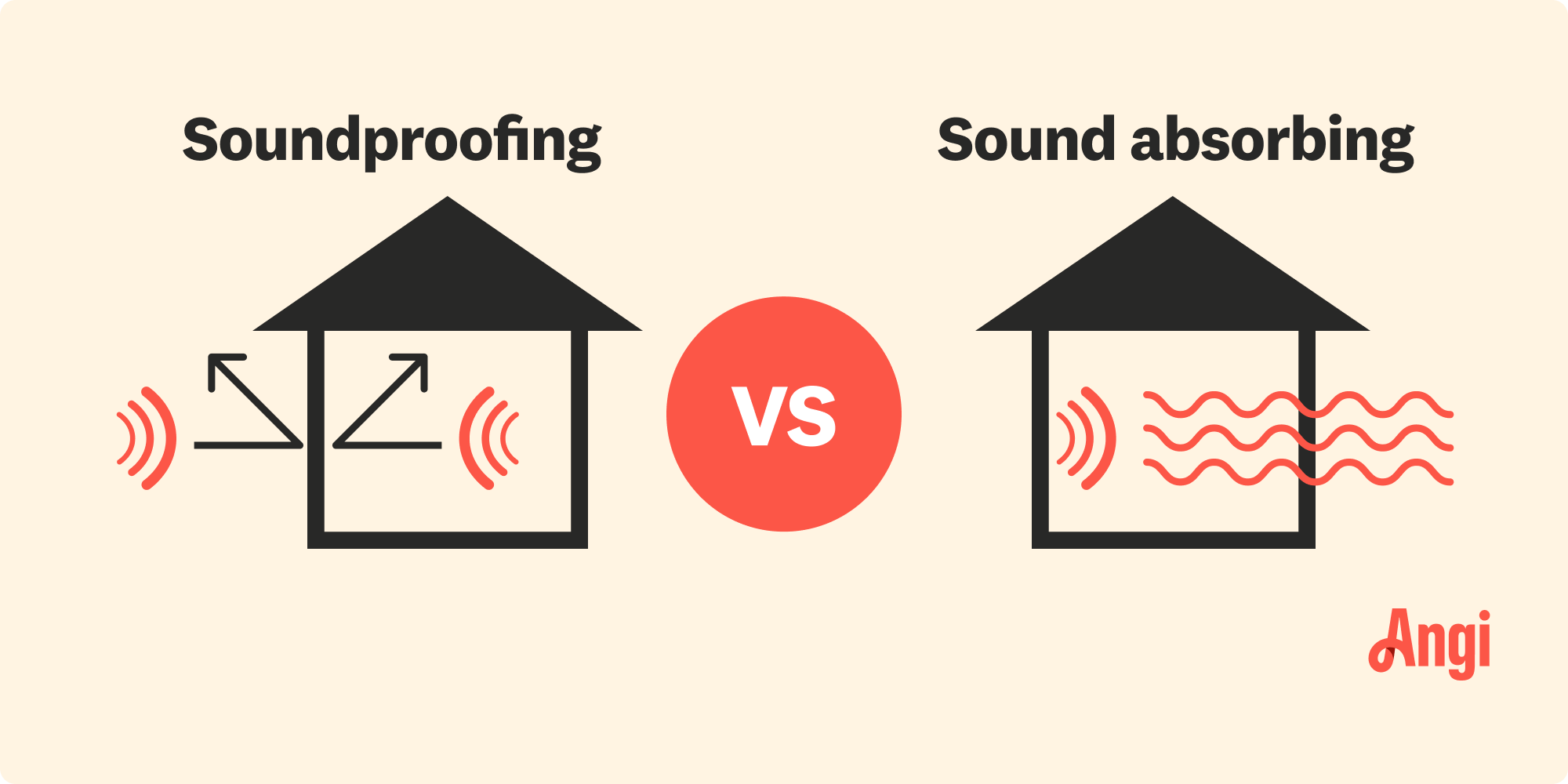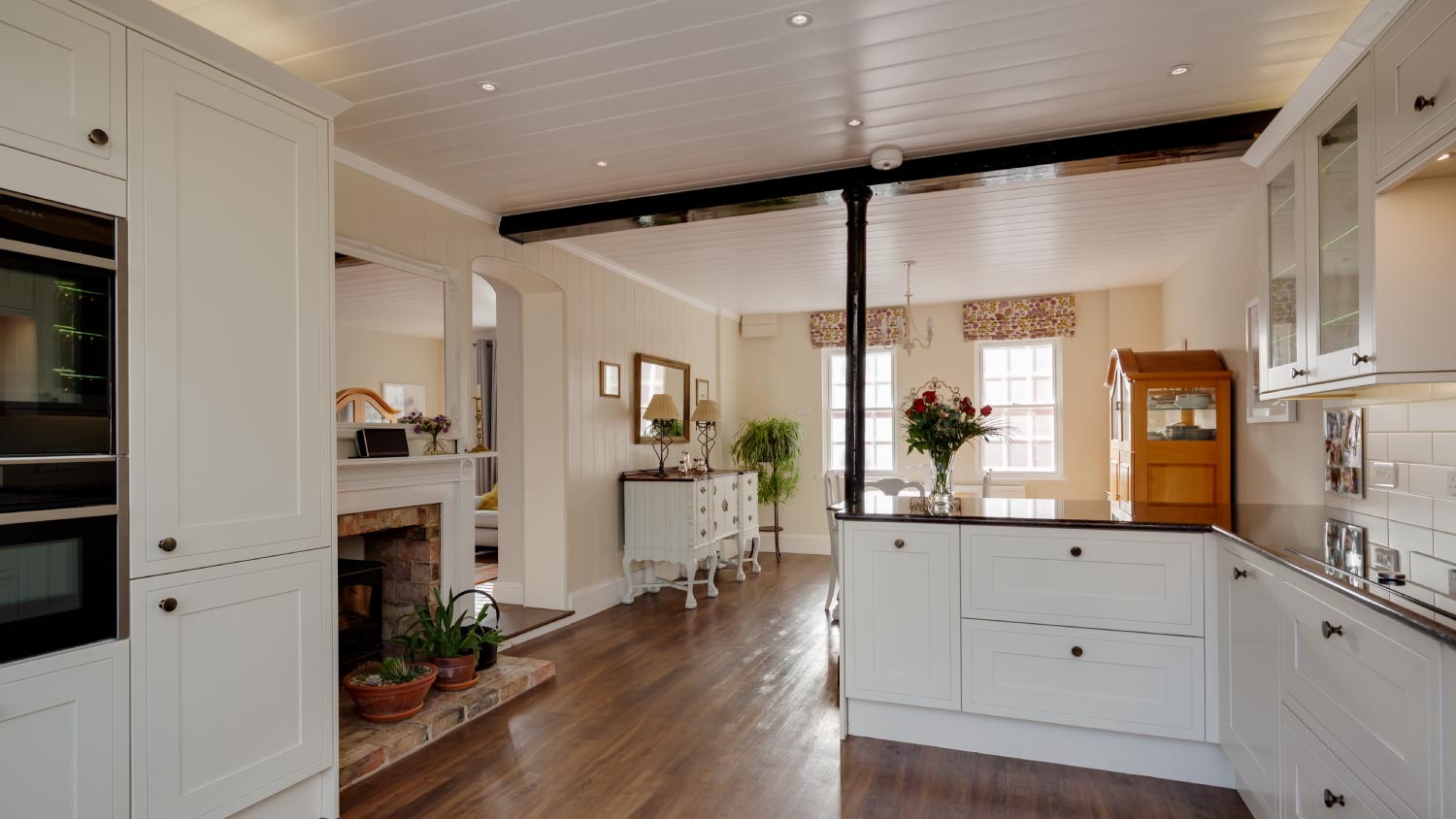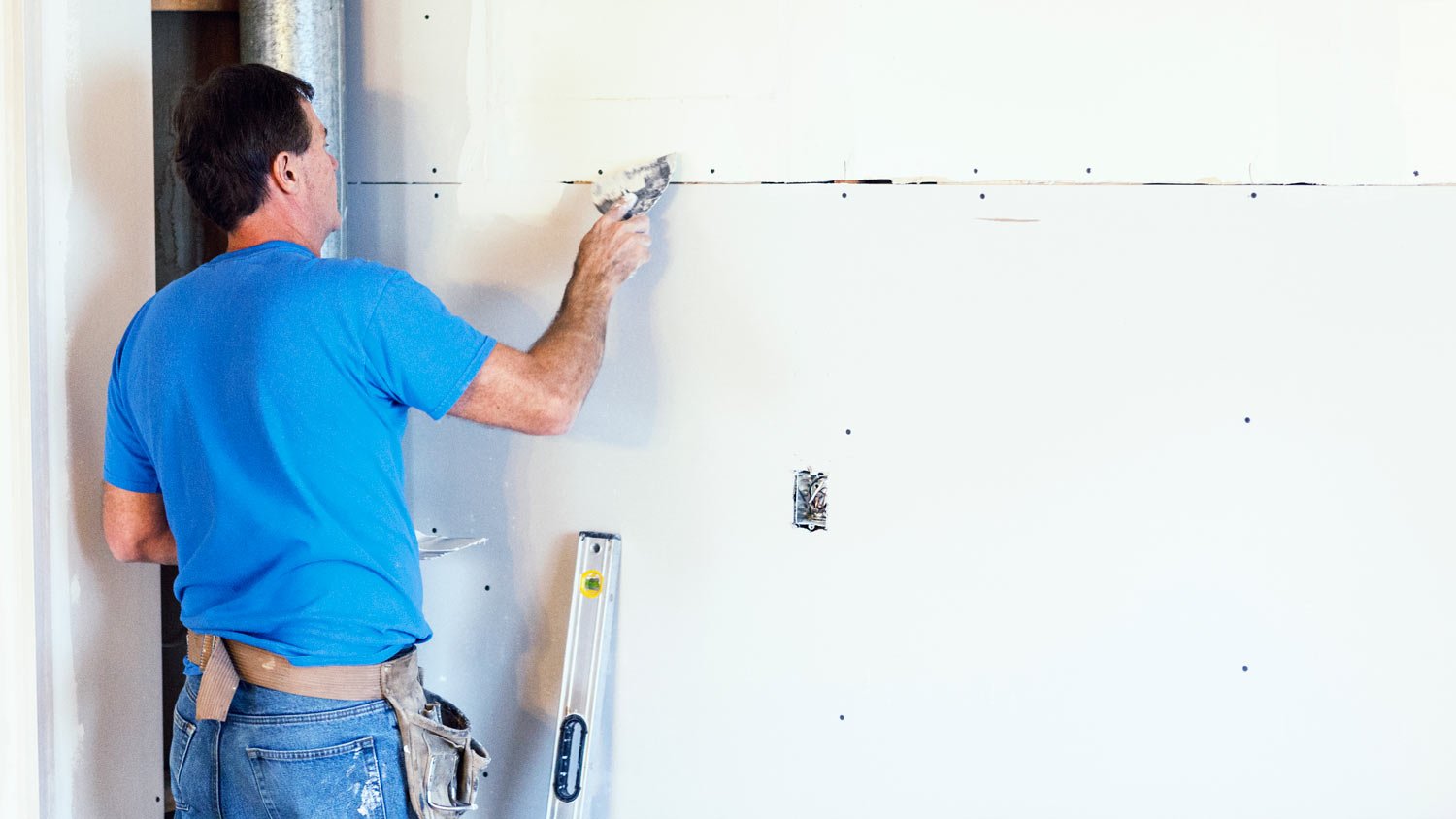
Drywall texture can create an attractive finish and add dimension to your home’s walls. This guide breaks down the factors that influence the cost to texture drywall.
With the right materials, no one will hear your sound system


Soundproofing blocks sound from entering or exiting a room.
Sound absorption removes echoes and improves sound quality.
For true peace and quiet, you may need a combination of soundproofing and sound absorption materials.
Soundproofing a room costs about $1,900, while sound-absorbing panels cost $10 to $100 each.
When you’ve had about all you can stand of your neighbor's lawn-mowing obsession, you might consider soundproofing your home. But before you reach for the earplugs and start ordering, know there’s a difference between soundproofing and sound-absorbing materials. Both projects achieve different results—know the difference to ensure you get the noise-canceling results you want.
Soundproofing and sound absorption both increase a space's acoustic comfort, but they do so in different ways. Soundproofing blocks sound from transferring between spaces, while sound absorption reduces reverberations back into the space.
Soundproofing is a good choice for homes in noisy neighborhoods to block out the sounds of traffic, lawn mowers, voices, and other outside sounds. It can also keep inside noise from traveling outside, which is good if you have children or host gatherings. Sound absorption works well in game or media rooms that get too loud.
You can also combine these two methods. A soundproofing contractor can help you decide which option or combination of the two is right for you.
Soundproofing blocks sound from entering or exiting a room. It’s a more advanced method for preventing noise, truly minimizing indoor and outdoor sounds in a room. In a soundproof room, your child can practice their trumpet without disturbing your neighbors.
| Pros | Cons |
|---|---|
| Stop sounds from entering or exiting the room | Best done during construction or remodel |
| Makes living in a busy neighborhood more comfortable | Some types require installation between walls |
| Keeps sounds from disturbing neighbors | More expensive than sound absorption |
Best for:
Music rooms, homes with kids, and homes in noisy neighborhoods
Homeowners building a new home or beginning a remodel
More extensive projects with a larger budget
Soundproofing can keep unwanted sounds out of your house while preventing your own family noises from disrupting people in your neighborhood. If you live on a busy street or your neighbors like to play dance music on the weekends, soundproofing could help make you feel more comfortable in your home.
Soundproofing works best when done during construction. Soundproofing involves adding materials inside or between walls to prevent vibrations from becoming sound waves. DIY soundproofing can be difficult and expensive compared to adding sound-absorbing materials.
Although soundproofing is great for completely blocking out noise, it requires heavy, solid materials that can be more expensive than acoustic foam, rugs, or lighter materials used for sound absorption.
Sound absorption improves sound quality in a room by absorbing echoes. Sound-absorbing materials are soft, similar to a sponge. A sound-absorbing project is ideal for any home office, music studio, or other space where you want top-notch sound quality, but it won’t truly cancel noises.
| Pros | Cons |
|---|---|
| Absorbs echoes in a room to improve sound quality | Doesn’t keep sound from entering or exiting |
| Budget-friendly solutions | Often a nonpermanent solution |
| Can be done in new construction or an existing home | Can be confused with soundproofing solutions |
Best for:
Creating better sound quality in a room
Completing simpler projects with a smaller budget
Home offices, rooms with high ceilings, and home theaters
You can add sound absorption to a finished home and install the materials on a wall rather than inside it. Sound absorption home improvement projects also cost less than soundproofing—about $10 to $100 per panel—and you can do this yourself. Even just one or two panels can help improve the sound quality in a room.
Discerning true soundproofing versus sound-absorbing materials can be difficult, as many confuse the two and mislabel the product. Items like acoustic foam are ideal for this project.
While sound absorption is good for improving sound quality in a room (like removing echoes), it won’t necessarily keep other sounds out. So if you add sound-absorbing materials to your home office, your colleagues will hear your voice loud and clear—but they’ll also hear other little feet running around the house at lunchtime.

Soundproofing a room costs about $1,000 to $2,800. This home renovation project involves installing more mass inside walls to stop sound waves. Various materials are available for soundproofing but check the products closely to ensure they’re actually designed to block sound.
For the best soundproofing, you may want to go for soundproof drywall, which costs about $75 per sheet. Mass-loaded vinyl can also stop soundwaves in their tracks. Even building a structure with brick or concrete walls can help soundproof your home.
Lastly, noise-canceling windows, also called soundproofing windows, use layers of glass and air to help block up to 95% of noise. You can either upgrade existing windows or install new noise-canceling windows. But new soundproof windows cost 15% to 80% more than standard windows.
Sound-absorbing materials like acoustic foam absorb echoing sounds and improve a room's sound quality.
There are sound-absorbing products for every surface of a room. To help absorb unwanted echoes, you can install sponge or acoustic foam wall panels, ceiling tiles, floor panels, or even plush rugs and curtains.

You can combine soundproofing and sound-absorbing techniques, which is ideal for home theaters, offices, studios, and other rooms in the house where you want to contain noise to the room, keep exterior noises out, and improve sound quality in the space. But you can also opt for one or the other depending on your needs and budget.
| Soundproofing | Sound Absorbing |
|---|---|
| Blocks sound from entering or leaving rooms | Improves sound quality by stopping echos |
| More expensive | Less expensive |
| Harder to DIY | More options and methods to choose from |
You might choose to soundproof if:
There are other houses or buildings nearby
You live near a street with heavy traffic
You have a baby or young children, and you’d like to soundproof to block noise from their rooms
You have a home recording studio for making music or producing podcasts
You might choose sound absorption if:
You want to reduce echoes and improve the acoustics in your home office for phone and video meetings
You want better audio quality in a home theater
You want to absorb echos in a large room or rooms with high ceilings
Remember soundproofing and sound absorbing are not the same. If you’re unsure whether to pursue soundproofing, sound-absorbing, or a combination of the two, hire a local soundproofing contractor near you to help you flesh out the details. They’ll install the right materials quickly, so you can get back to taking work calls in peace (or finally watch the latest action thriller at a reasonable volume while your family sleeps).
From average costs to expert advice, get all the answers you need to get your job done.

Drywall texture can create an attractive finish and add dimension to your home’s walls. This guide breaks down the factors that influence the cost to texture drywall.

Whether you’re trying to keep noise in or out, soundproofing materials are the way to go. Use this guide to see how much it costs to soundproof a room.

Installing beadboard ceilings is a great DIY project. Learn what to expect cost-wise from this project, whether removing or covering a popcorn ceiling.

Thick gaps and extra joint compound can alter the look of drywall. So, should drywall be butt up against a wall? Review this guide for seamless installation.

Before you dive into a drywall project, you’ll need to know how many screws to use per sheet of drywall. This guide will help you calculate the total number.

Confused about drywall screws versus wood screws? Learn their key differences, best uses, and which one to choose for your next project.